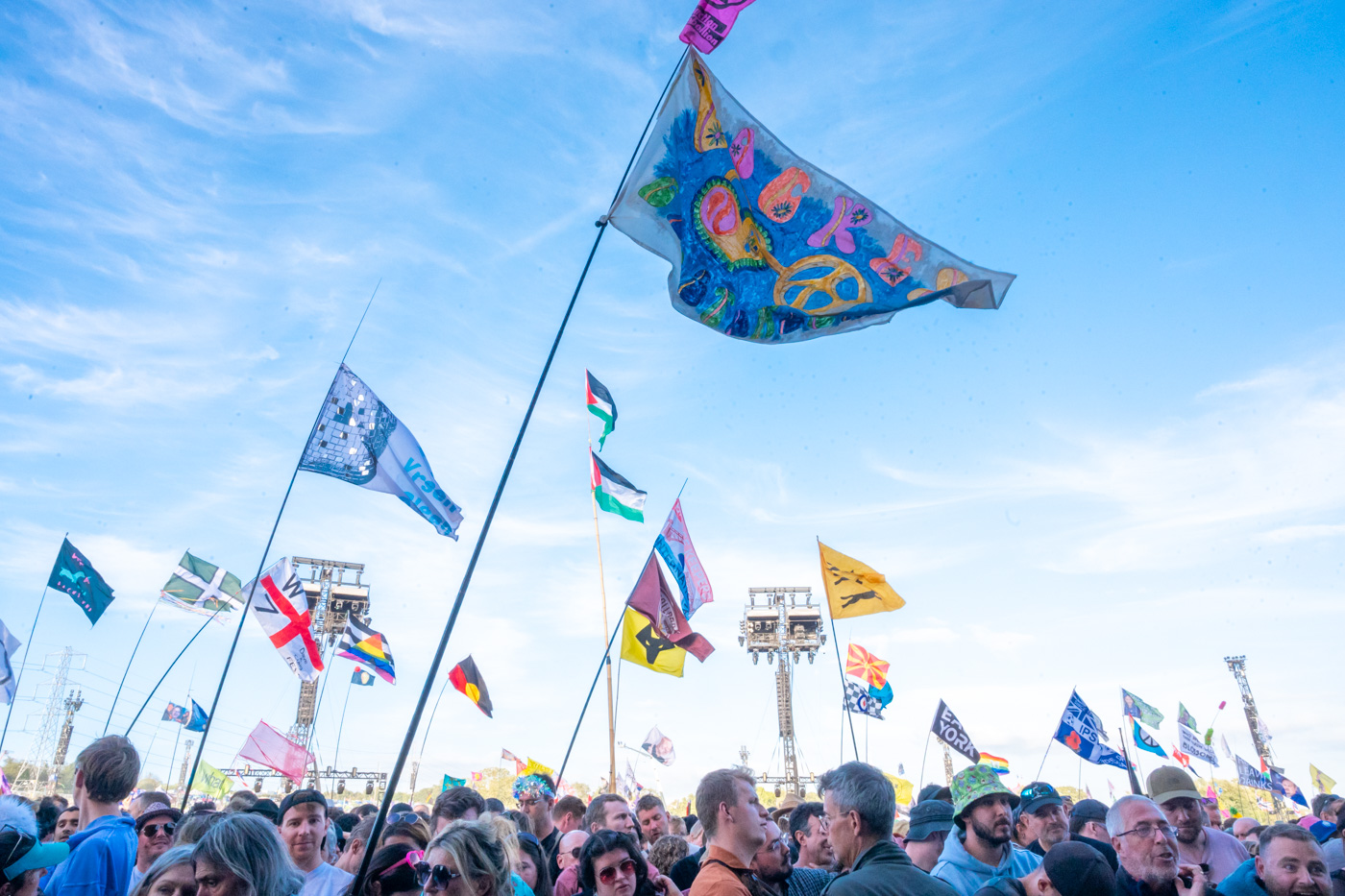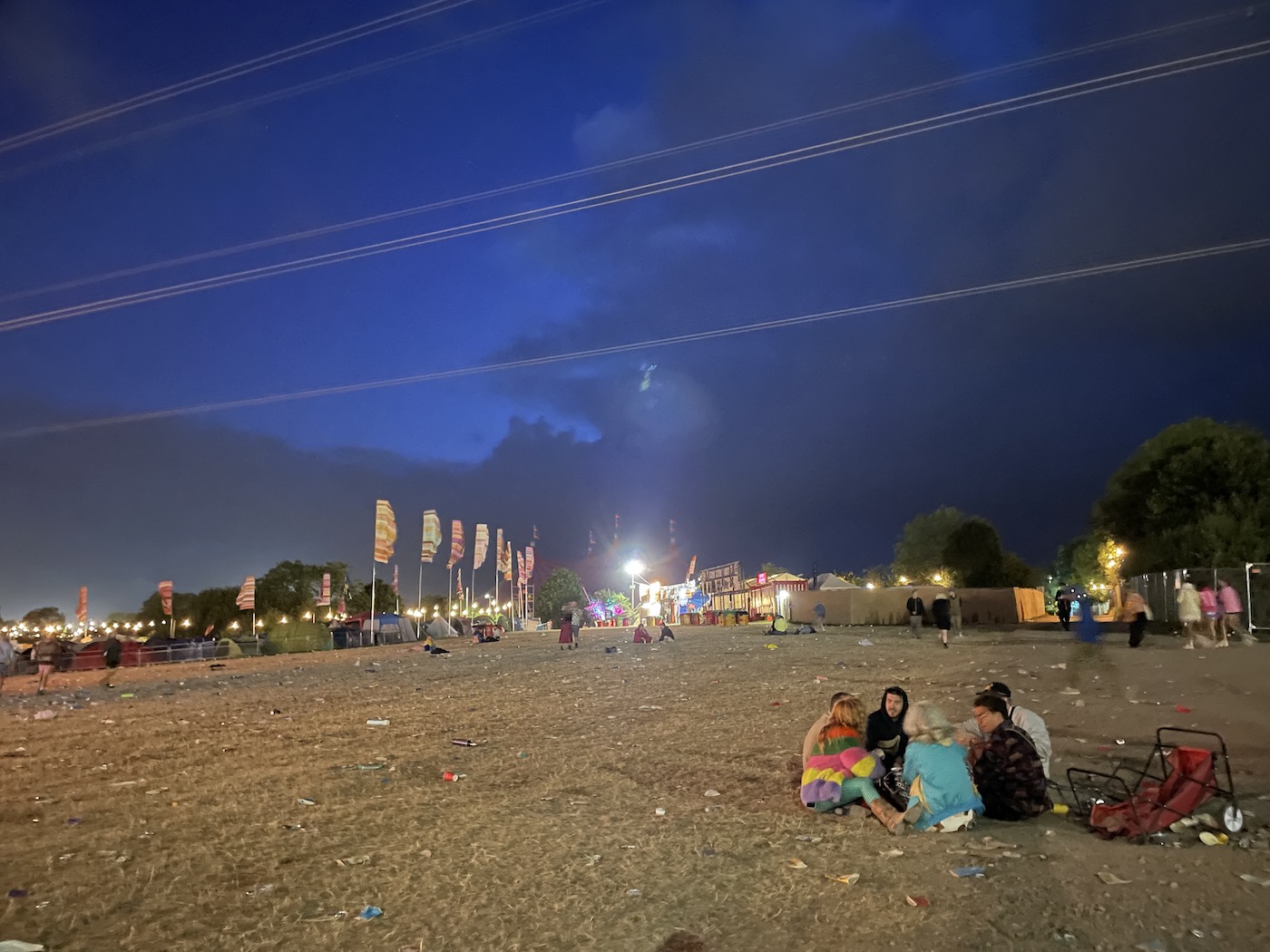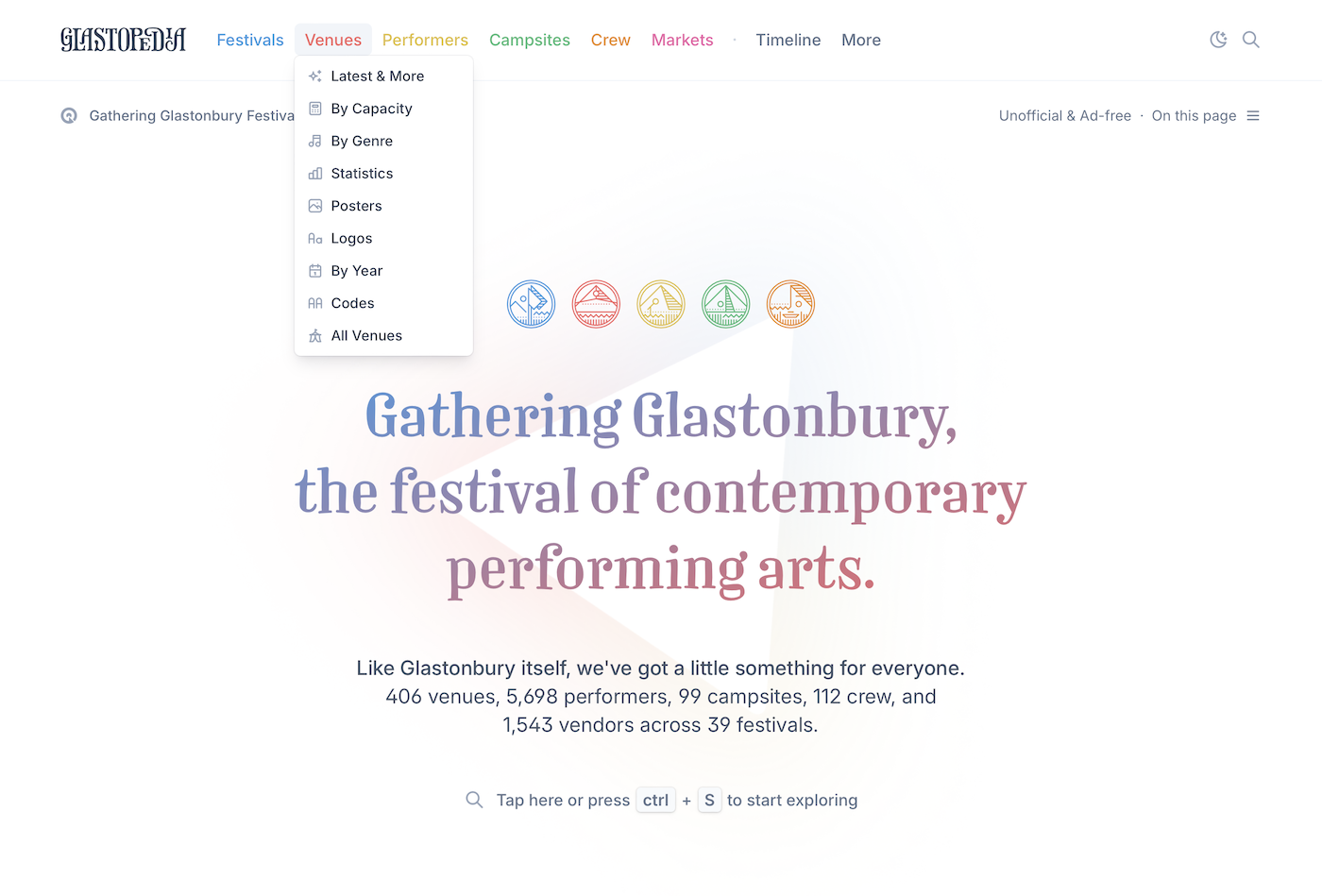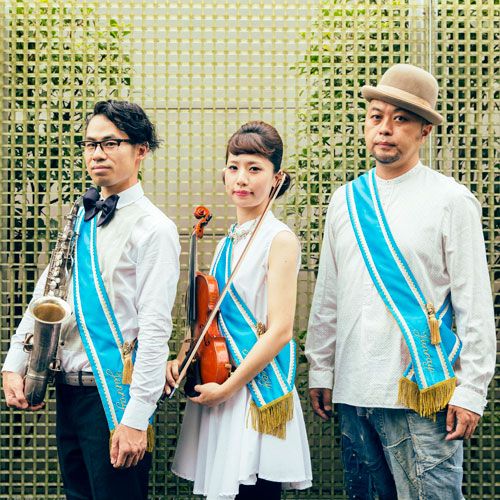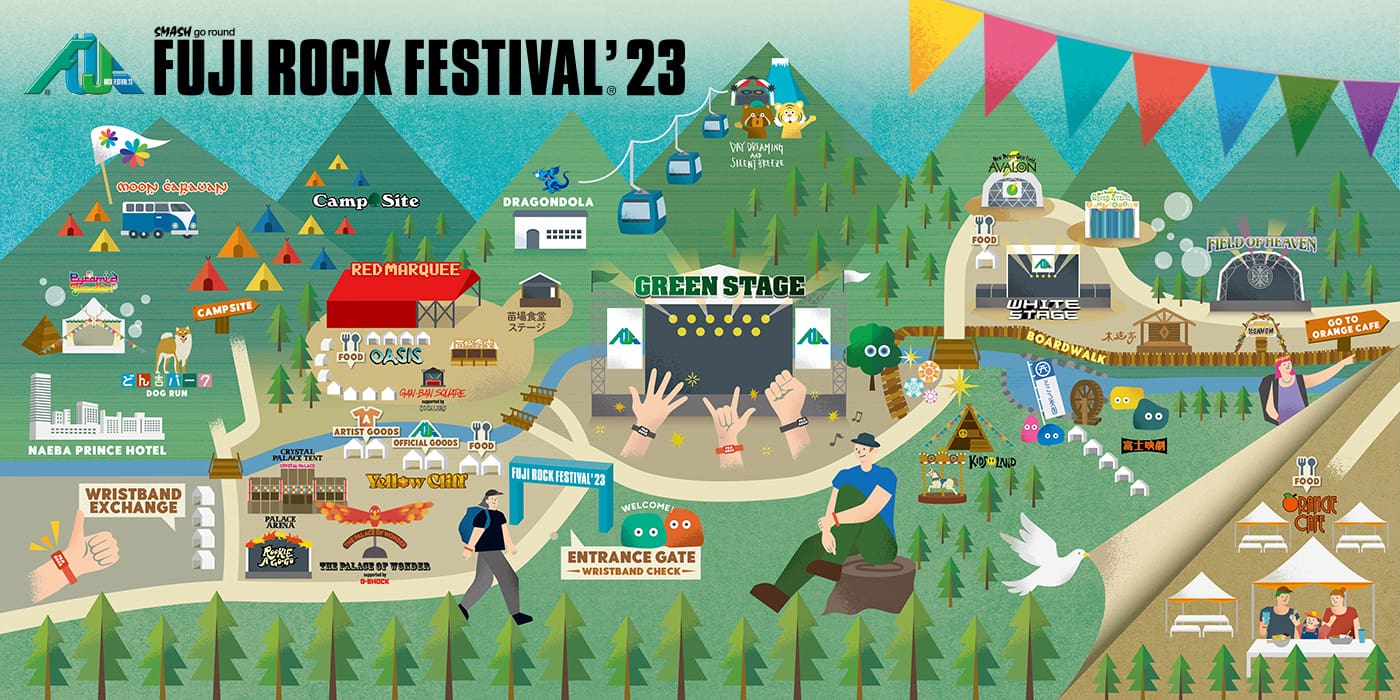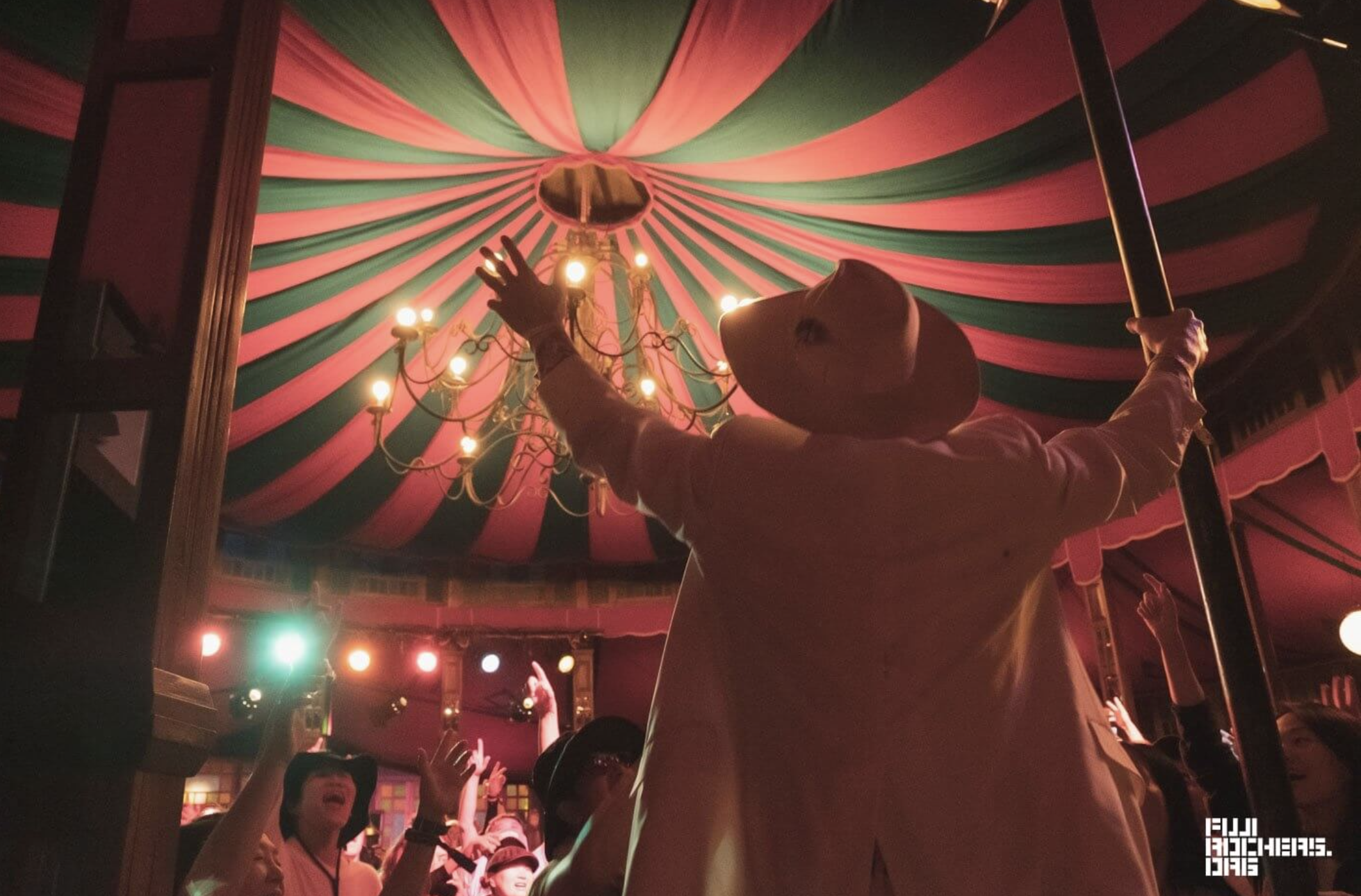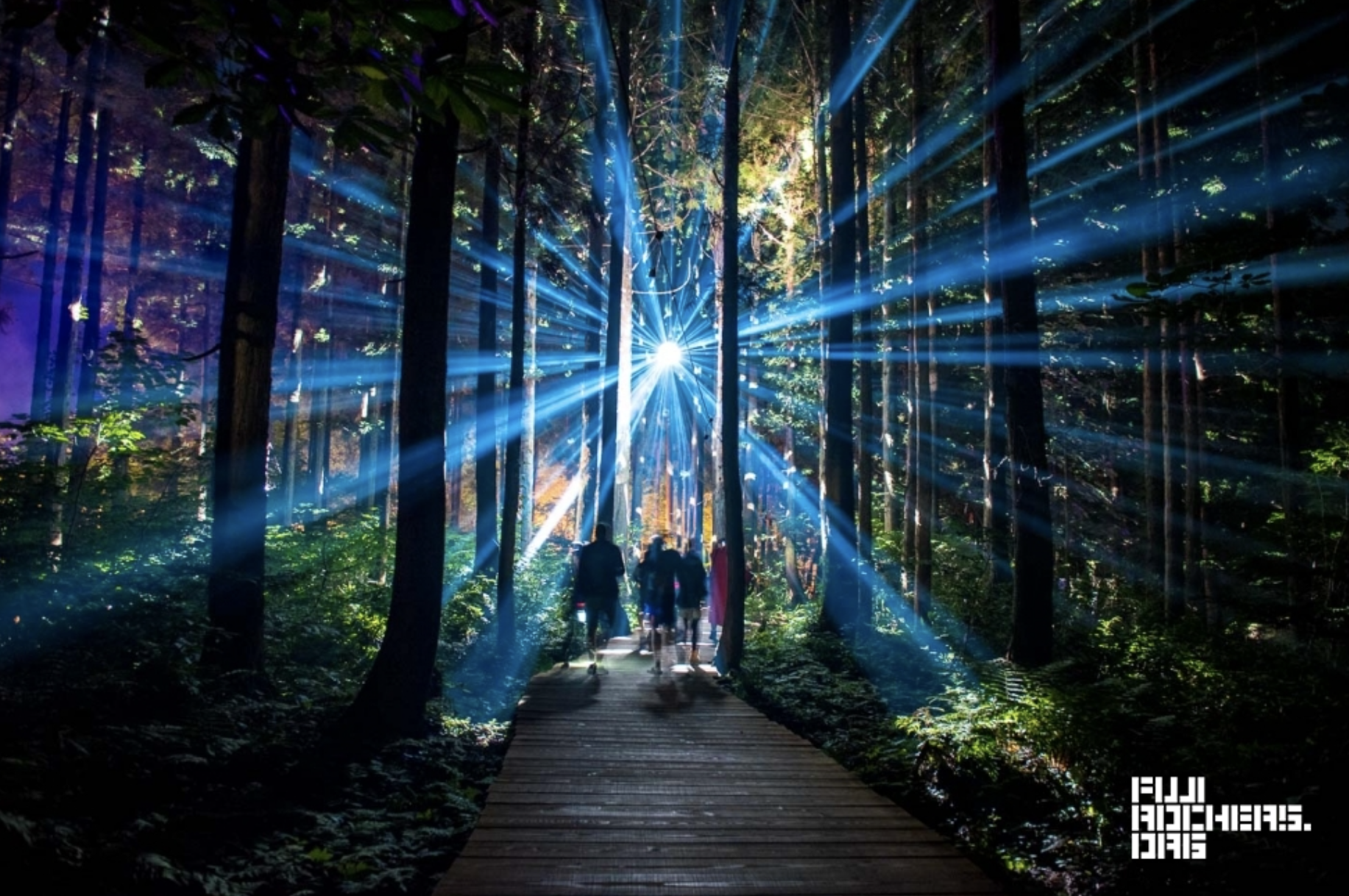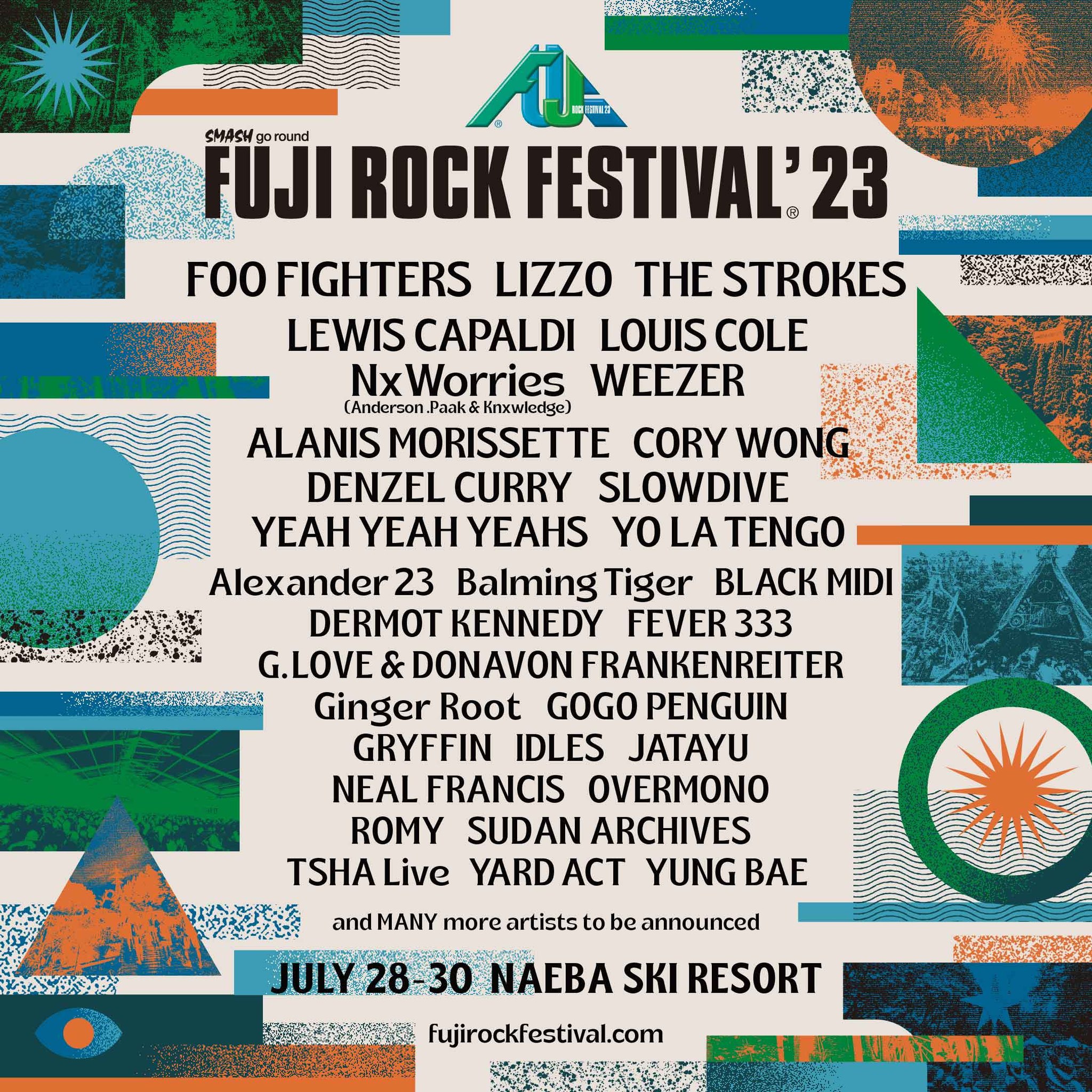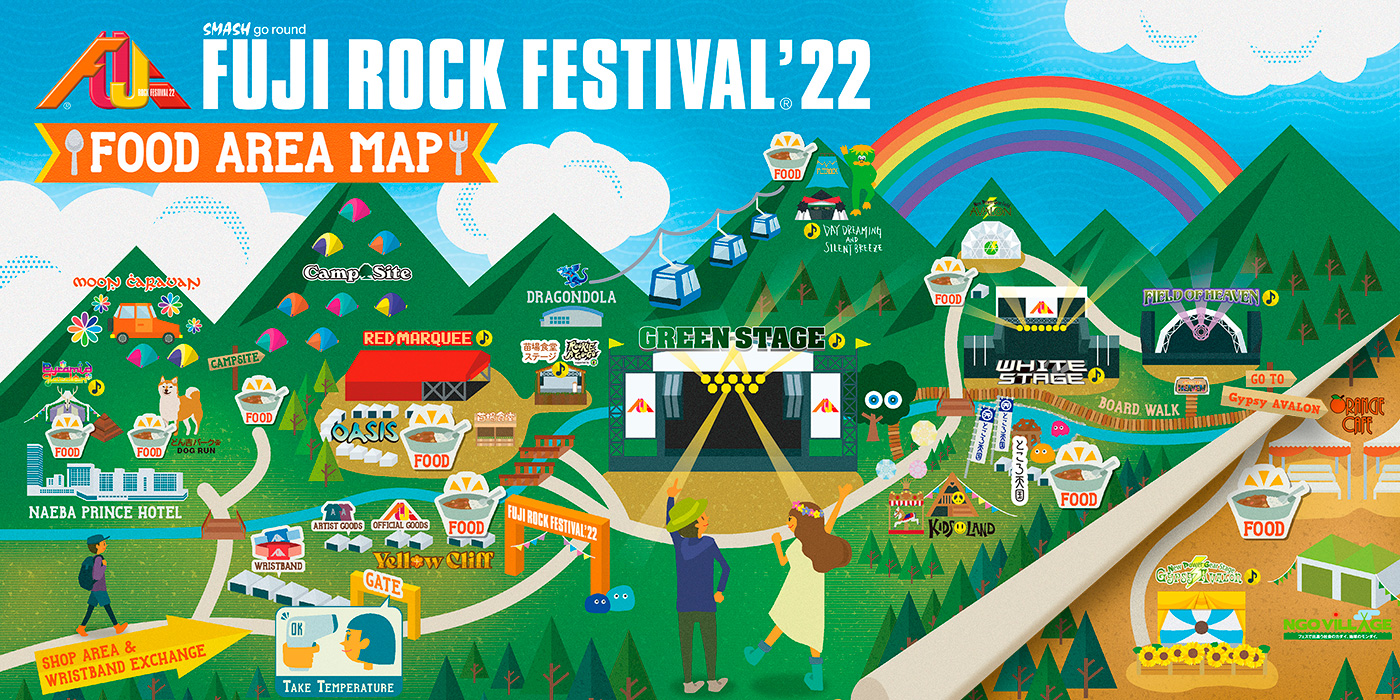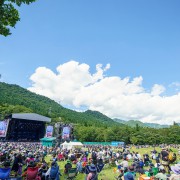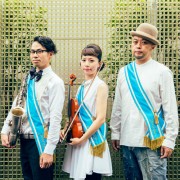-
Another Stunning Year, Another Stunning Asagiri Jam!
- October 21, 2024 ● From Fujirockers.org
DAY ONE
A whole year is always a long time to wait for the next year’s Fuji Rock. Just remember if you are starting to feel the booty shakes of withdrawal symptoms as the summer comes to a close, there is always big Fuji’s undersung sibling, Asagiri Jam!
While Fuji has all the charm and grandeur of a top-tier international music festival, sometimes what you really need is something a little more intimate, a little greener and a little more chill. Fortunately Asagiri is just that. A much more relaxed vibe, a bit on the tie-dye and homemade granola enthusiast tip, lots of families, lots of dogs, full of charm.
Taiko drum circles in the forest, a little tucked away take-all-comers DJ booth, dog runs, and plenty of places for kids to be kids. A bit of grown-ups letting their hair down. The weather on Saturday was everything anyone could ask for, warm with a little whiff of fall in the air. Fuji didn’t make an appearance, but they say the good things come to those who wait, don’t they.
The Rainbow Stage kicked off with Spain’s Xavi Sarria’s set of easily digestible pro-brotherhood and anti-fasist protest rock. It was a good intro to a weekend of good intentions and positivity. But music wasn’t the only thing on the menu, there was a surprisingly variety of things to eat and shop for. Wild-boar soup? Sure! Mystery wrapped ‘blind date’ books? Why not! Homemade jewelry workshop? Don’t mind if I do! Plenty of things to see and do and buy, and without the crush crowds of a lot of bigger festivals
Acts like the cosmic smooth funk band Ovall and the folksy vocal harmonies of Kiseru provided the perfect background music for the daylight hours, taking us by the hand and leading us into Asagiri night one. And that’s where things really started cooking.
Iceland’s Kiasmos accompanied sundown with their sweet, mesmerizing synth as the gathering clouds were kissed pink. Nothing beats a crisp mountain sunset in the autumn. Campfires were lit near the Rainbow Stage, the relaxed gradation from tents to loungers to standers as you made your way towards the stage. A wonderfully organic festival feeling. And then, miracle of miracles, Fuji-san poked her head out from behind the clouds to catch the end of the set
The big newsflash of the night was that Cornelius is 100% back in the game. His frenetic set was fresh, with a lot of retooled versions of old favorites all sounding a little less tame than usual. Fading down the pop and bringing up the bite. The dude sure puts on an engaging set to say the least, special props to longtime drummer Yuko Araki for kicking so much ass. This definitely started the party, and the one that really hammered home the point that Asagiri might not be big, but it can be huge.
While Cornelius was brash, Eiko Ishibashi set was straight up pillow-talk. Dreamy and gentle, flute and organ flittering in the night air. Spoiler though, biggest (and probably most predictable) surprise of the night was Jim O’Rourke providing moments of characteristic jagged guitar. The Moonshine stage is definitely the moodier of the two, and this was the night’s vibiest set. Also Jim O’Rourke has forever and will forever look at home in a cardigan. Their set ended with an upswelling into ragged noise which was fairly breathtaking, and really made it feel like a hard set to follow. It would take a real idol-caliber star….
Fortunately Asagiri had a nantetatte level one on their hands with Japanese pop legend Koizumi Kyoko together with renowned poet Ito Seiko. Their set was a rollicking golden era j-pop dub remix bit of wildness mixed with Seiko’s poetry in a way that absolutely shouldn’t work on paper but absolutely does in practice. Not too often you get to see a legend perform a set so out left field that feels so right. Kyon Kyon forever.
The mountain temperature dropped deeply as night fell, but that only made returning to campfires and warm sleeping bags the more inviting. After all, we all had a full day of revelry ahead of us.
DAY TWO
Waking up to murmured campground stirrings and the chirping of birds, emerging from your tent to see blue skies and an unoccluded Mount Fuji, these are the things that make Asagiri Jam special. Sunday was starting on the right foot.
There’s just undeniably fun and wholesome about radio taiso in the morning. Somehow synchronized calisthenics just seems to make sense here, really putting the camp in camp. And if that didn’t wake you up and get your blood pumping, the taiko performance afterwards certainly did!
Homecomings’ set was a nice amuse bouche of solid indie pop, but things really kicked off with Taiwan’s Elephant Gym, their bubbly funky set was loose and jammy, but not at all sloppy or unfocused, and it fit the pre-noon festival mood perfectly. Even repeated sound issues couldn’t distract the early lunch crowd. That is until a large tent blew about 50 meters into the air, floated there like a kite for nearly a minute directly above the audience, then flew off nearly colliding with the Rainbow Stage itself. Lead singer KT Chang’s follow-up question from the stage of ‘nani happened?’ was perhaps the cutest moment of the festival. Never a dull moment!!
Aratani Shohei’s soulful pop and JJJ’s forceful hip hop pushed the day forward and kept spirits up. But never young beach’s Abe Yuma really got things vibing. Well crafted pop confection best served under the sun. Little notes of surf rock, bossa nova, funk, basically channeling any genre that makes you bob your head and think about summer. It is hard to create a good song, but even harder than that is knowing the right amount of instrumentation bells and whistles to add. Abe nailed it. Especially the backing vocals.
Dusk was heralded by Mono No Aware, with their casual ‘well, should we just do this thing?’ fairly off kilter approach to an indie set. One of things that really sets them apart from their contemporaries is that they are quite unpredictable without being terribly challenging. That’s a fine line to walk, and they did it well.
Every time the hands on the clock point towards meal it was remarkable how seriously folks at Asagiri took it. There could be a stand that’s totally open selling perfectly serviceable festival food, but your average Asagiri-er is almost always going to pick the well known place with the 20 minute wait. It leads one to wonder whether people are making this choice based on previous knowledge, or if the allure of the line alone is strong enough to pull people in. Regardless, it can seem that people are here for the music and the food in equal measure.
Although Ghostly Kisses set wasn’t quite the last of the festival, it was close enough, and as the band’s name suggests it held something ethereal, fragile and slightly sad. It was a pretty, dreamy set, contrasting with Stuts J hip hop peppered DJing with full live band set at the Rainbow stage. They promised to get the crowd moving and warmed up on a chilly night, and by all accounts they appear to have. Undeniably an act well suited to a big stage at a medium sized festival, they were smooth and easily digestible. At the same time, Todd Terje was on the Moonshine stage spinning some classic funk and soul grooves with a noticeably booty shaking-er reaction. It was a choose your own destiny sort of situation. (Although the out in the open secret is that the place that was going the wildest was the Carnival Star DJ booth. But that was true for the course of the festival)
And that left the last choice… Qrion’s thumping electro DJ set or Hitsuji Bungaku’s indie rock. Qrion had people moving more than any other act of the weekend, and her plonking synth sounds were pretty irresistible. Hitsuji Bungaku on the other hand felt like they were channeling ghosts of a grungier guitar vocal bass three piece era of indie with their set. Even their lack of stage adornment or special lighting seemed charmingly anachronistic. Impressive that the last few years have seen them rise to Rainbow Stage closer, but they really held their own. Sweet but not cute, and angsty but not dark. Either way you went, there was no wrong answer.
In the end, Asagiri almost feels more like a hometown matsuri than a traditional music festival, but the good news is we are all neighbors here despite how far we may live apart from each other. If you’ve never been, you really should.
-
The Spirit of the Festival: Glastonbury’s Community Vibe and Its Future Inspiration for Fuji Rock
- July 23, 2024 ● Experiences, From Fujirockers.org

Crowd gathers for a workout class. Photo credit: Keiko Hirakawa
Attending Glastonbury this year was a fantastic experience. As someone who usually covers Fuji Rock, it was amazing to see the festival that inspired it all. The sense of community at Glastonbury is something special, and it’s quite different from Fuji Rock. Here’s a peek into the unique vibe that makes Glastonbury stand out.
Vastness and Accessibility
The first thing that struck me about Glastonbury was its size. Covering 900 to 1,100 acres and hosting up to 210,000 people, it’s enormous compared to Fuji Rock’s 100,000 to 150,000 attendees and 1.5-mile stretch. But despite its vastness, Glastonbury’s circular layout makes it surprisingly easy to get around. Every path seems to lead to another exciting part of the festival, unlike Fuji Rock, where you often have to trek through the entire length to get from one end to the other.

Post office inside of Glastonbury with a vast variety of postcards also available for purchase.
Diverse Community Activities
Glastonbury’s community vibe is boosted by its incredible variety of activities. I joined a Samba class, which felt just like my weekly Zumba classes—a judgment-free zone where I could dance my heart out. But that was just the beginning. There were movie viewings with Q&A sessions, like one with Florence Pugh discussing “Dune 2.” Entire sections of the festival were dedicated to relaxation, with massages, aromatherapy, and tarot readings. Activist movements were also prominently featured, encouraging everyone to engage with important social issues.

Iconic Carhenge at Galstonbury.
One particularly memorable spot was Carhenge, a playful homage to Stonehenge made of cars. Right next to it was Terminal 1, a new interactive section where you could learn about the migration process and the challenges faced by migrants in the UK. It was eye-opening and added a layer of depth to the festival experience. Adding to this “village-like” atmosphere were unique features like a post office, a pharmacy, and even the Glastonbury Free Press, a newspaper created specifically for the festival. These elements gave the festival a small-town feel, where you could truly immerse yourself as a resident of this annual community.

Flags fly all over Glastonbury to showcase individuality and solidarity. Photo credit: Keiko Hirakawa
Global Musical Diversity
The music at Glastonbury was another highlight. Over the weekend, I saw bands from all over the world. From Japanese taiko drumming and traditional Indian bands to Mexican mariachi performances, the festival showcased an impressive array of global musical traditions. There was even a new stage dedicated to uplifting musicians from the Global South, particularly South Asia. This commitment to musical diversity really highlighted Glastonbury’s inclusive spirit and celebration of cultural exchange.
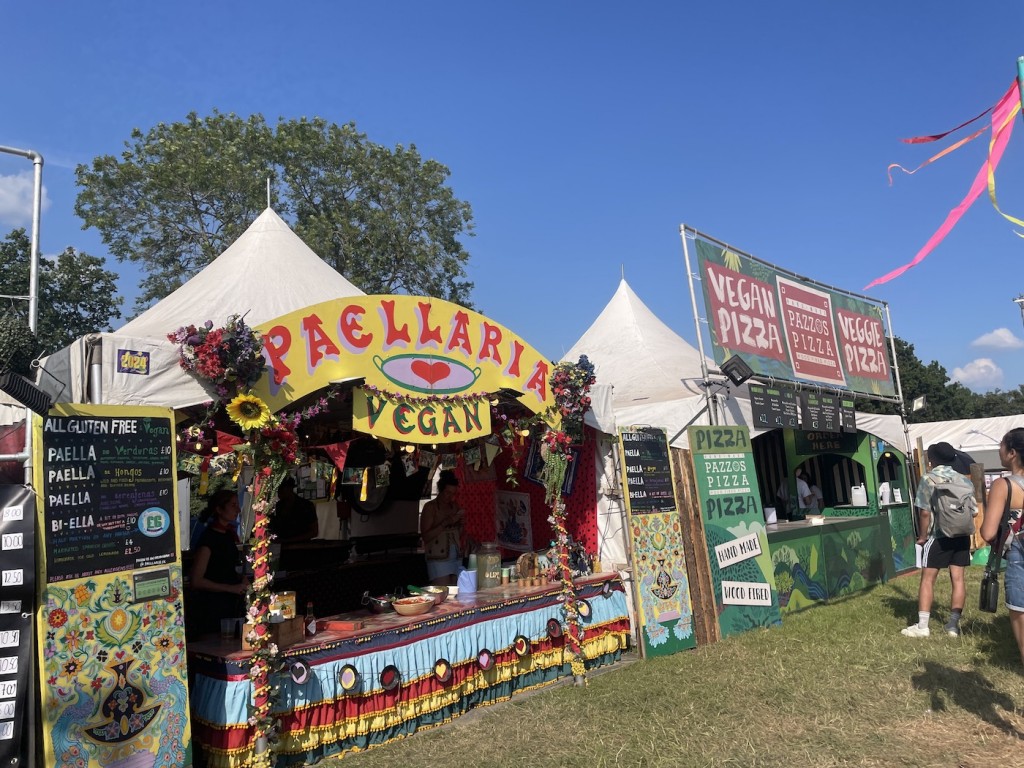
Vegan food and options found throughout Glastonbury.
Culinary Variety
The food scene at Glastonbury was equally diverse. While Fuji Rock offers about 100 food stalls, Glastonbury boasts around 400, offering a vast array of culinary delights that reflect the diversity of England. The food at Fuji Rock is undeniably fantastic, with high-quality cuisine no matter what type, but Glastonbury’s sheer variety is hard to beat. From classic British fare to international delicacies, there was something to satisfy every craving.
Fuji Rock’s Unique Community Vibe
While Fuji Rock has a strong community vibe, it’s distinct from Glastonbury. The differences can be attributed to both Eastern and Western cultural nuances and the broader access to diverse musicians and attendees at Glastonbury. However, it was heartening to overhear people at Glastonbury talking about Fuji Rock. This interest suggests that Fuji Rock might begin attracting more international attendees, further diversifying its offerings in workshops, food, and performances.
Glastonbury’s community vibe is characterized by its vastness, accessibility, diverse activities, global musical representation, and culinary variety. It’s a festival that not only celebrates music but also fosters a sense of global community and cultural exchange. As Fuji Rock continues to evolve, it may draw inspiration from Glastonbury’s inclusivity and diversity, enriching the experience for attendees from around the world. There’s hope that Fuji Rock could also incorporate similar village-like components, helping attendees connect deeper with one another as “residents” of the community that comes together once a year.
Photography credit: Keiko Hirakawa
-
Green Initiatives: A Comparison Between Glastonbury and Fuji Rock
- July 22, 2024 ● Experiences, From Fujirockers.org
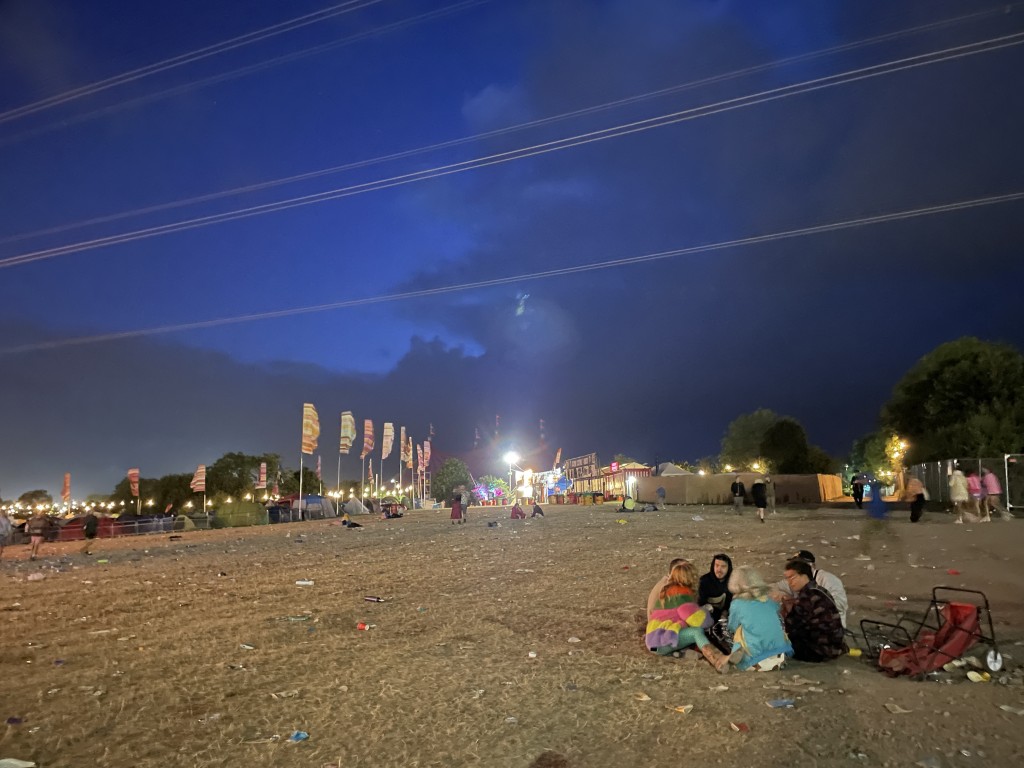
The aftermath of Glastonbury’s main stages at 3am each night.
When it comes to sustainability, two of the world’s most iconic music festivals, Glastonbury and Fuji Rock, offer some intriguing contrasts and lessons for each other. Both festivals have made strides in reducing their environmental impact, but each has unique approaches shaped by their cultural and logistical contexts.
Glastonbury’s Sustainability Efforts
Glastonbury, held in the UK, has been a pioneer in festival sustainability:
- Waste Management: Glastonbury has a massive team of volunteers who sort through waste, using color-coded bins to ensure proper recycling. They even have an on-site recycling facility that sorts everything out.
- Biodegradable Materials: They’ve banned plastic and glass, opting for biodegradable and compostable alternatives. This helps keep the festival’s footprint low.
- Water Refill Stations: One of the standout features is the availability of free water refill stations throughout the grounds. This greatly reduces the need for single-use plastic bottles.
- Renewable Energy: The festival makes extensive use of renewable energy sources, ensuring that stages and facilities are powered sustainably.
Fuji Rock’s Approach
Fuji Rock, held in Japan, also emphasizes sustainability, but with a distinct cultural twist:
- Litter-Free Grounds: A remarkable aspect of Fuji Rock is how clean the grounds stay. Attendees take personal responsibility for their trash, adhering to the Japanese principle of leaving no trace. This contrasts sharply with Glastonbury, where staff have to clean up littered areas every night.
- Camp Chair Etiquette: At Fuji Rock, you can leave your camp chair out all weekend without fear of theft. This level of mutual respect is a testament to the festival’s community spirit. Meanwhile, at Glastonbury, reports of chair theft from campsites are not uncommon.
- Eco-Friendly Initiatives: This year, Fuji Rock has ramped up its sustainability efforts, including increased recycling and the use of eco-friendly products. They’ve partnered with local organizations to promote environmental awareness among attendees.
- Energy Conservation: The festival uses renewable energy sources, including solar panels, to power various parts of the event.
How can both festivals improve?
At Fuji Rock, despite its strong sustainability ethos, Fuji Rock doesn’t provide free water refill stations. Attendees often have to buy plastic bottles, which creates unnecessary waste. Implementing refill stations would be a major step forward. As for Glastonbury, they could take a leaf out of Fuji Rock’s book by encouraging attendees to take more responsibility for their trash. Handing out trash bags at the entrance and promoting the importance of the cleaning crew more visibly could help.
Learning from Each Other
There’s a lot that these two festivals can learn from each other. Glastonbury’s structured initiatives like water refill stations and comprehensive waste management are top-notch and could be adopted by Fuji Rock to reduce plastic waste further. Conversely, Fuji Rock’s cultural practices around cleanliness and mutual respect offer valuable lessons for Glastonbury.
Comparing Glastonbury and Fuji Rock reveals both festivals’ strong commitment to sustainability, albeit in different ways. Glastonbury’s structured and proactive measures contrast with Fuji Rock’s cultural and community-driven approach. By learning from each other, both festivals can enhance their sustainability efforts, creating greener, more enjoyable experiences for all attendees. As the festival world continues to evolve, the exchange of best practices will be crucial in achieving a sustainable future for these large-scale events.
References:
https://www.nprillinois.org/2024-06-29/can-the-worlds-largest-music-festival-be-sustainable-glastonbury-is-trying
https://www.wusf.org/2024-06-29/can-the-worlds-largest-music-festival-be-sustainable-glastonbury-is-trying
-
Glastopedia: Interview with Creator Ben Smith
- July 20, 2024 ● From Fujirockers.org, Interviews

Glastopedia, an extensive and unofficial online compendium dedicated to one of the world’s most famous music festivals, Glastonbury Festival, offers a treasure trove of information on every aspect of the festival. From its history and timeline to detailed data on performers, venues, campsites, crew, and vendors, Glastopedia expands far beyond the capabilities of the festival’s official website and app to date.
I met Ben Smith, the sole creator of Glastopedia, in London during my year there, and had a chance to enjoy Glastonbury together this year. Having come across Glastopedia while doing my own searches for new performers on the horizon at Glastonbury 2024, I was excited to find out that my own acquaintance was the sole brain behind the encyclopaedic website. Here, we get insights into the inspiration and aspirations for the ever-evolving grassroots archive.

Ben Smith, the creator of Glastopedia, enjoying Glastonbury.
Interview with Ben Smith of Glastopedia
Ben Smith, the creator of Glastopedia, shares his journey from being a latecomer to Glastonbury in 2019 to becoming deeply obsessed with the festival, leading him to create what is now one of the largest unofficial encyclopedias dedicated to Glastonbury. Reflecting on his first experience, Ben describes how he was “blown away” by the temporary city that emerges and disappears within a week, sparking his curiosity and eventual deep dive into all things Glastonbury.
Since its inception, Glastopedia has grown exponentially, fueled by Ben’s passion for uncovering and documenting every aspect of the festival, from stages and performers to the people who build and run it. He reveals, “I’m a bit of a data nerd,” which is evident in his meticulous research methods, including scouring the web archive, old festival forums, and even long-forgotten Flickr accounts to unearth hidden details about the festival’s history.
Despite moments of doubt, Ben persevered, and Glastopedia is now flourishing, attracting around 100,000 visits per month. His dedication to maintaining an ad-free, community-driven platform is clear, as he emphasizes, “I never will monetize it… I just want it to be something for the people to use.” Ben’s work has also garnered attention from the festival community, with longtime festival workers reaching out to contribute information, further enriching the site’s content.
Ben shared further insights into Glastonbury’s unique atmosphere, its evolving yet evergreen nature, and the challenges of maintaining its grassroots identity in a rapidly modernizing world. He emphasized the festival’s open and accepting culture, allowing attendees to fully express themselves and pursue their passions. Ben described Glastonbury as a place where “anyone can do anything they are passionate about and showcase it there,” highlighting the festival’s commitment to providing a platform for creativity and self-expression.
A notable aspect of Glastonbury’s charm, according to Ben, is its resistance to modernization. He mentioned that while the festival’s website and processes may be considered outdated by some, this quirkiness adds to its authenticity. “The fact that everything’s a little bit shit… it’s kind of cute,” Ben said, drawing a contrast between Glastonbury’s organic vibe and the polished, Instagram-perfect aesthetics of other major festivals like Tomorrowland.
Ben also reflected on the festival’s commitment to sustainability, particularly in comparison to Fuji Rock. He acknowledged that while Glastonbury takes significant steps towards environmental responsibility, such as eliminating single-use plastics and using sustainable power sources, there are still cultural differences that influence the festival experience. For instance, he noted the prevalence of rubbish at Glastonbury despite its eco-friendly initiatives, contrasting it with the near-pristine cleanliness of Fuji Rock, where even the smallest piece of litter is rarely seen.
A highlight of the interview was Ben’s recounting of his favorite email from a long-time festival contributor, Alistair. Alistair, who has been involved with Glastonbury since its inception, shared stories about the festival’s early days and expressed appreciation for the website’s archival efforts. This exchange underscored the importance of preserving Glastonbury’s rich history, with Ben noting, “Archiving things is so important… Glastonbury is a culture and community of itself.”
Ben’s passion for documenting the festival’s history is evident in his meticulous approach to gathering even the smallest details, such as set times for specific performances. He expressed a deep sense of pride in his work, acknowledging that it is an ongoing project that will likely continue long after the festival itself. This dedication to preserving the festival’s legacy speaks to Glastonbury’s enduring impact and the importance of keeping its story alive for future generations.
The interview concluded with a discussion on the challenges of securing tickets for Glastonbury, a process Ben described as “the worst day of the year.” Despite the difficulties, he emphasized the importance of community and teamwork in overcoming these obstacles, staying true to the festival’s core values. He shared the strategy of forming groups and pooling resources to increase the chances of obtaining tickets, reflecting the festival’s spirit of collaboration.
Looking ahead, Ben is excited to continue expanding Glastopedia, particularly focusing on the festival crew’s stories and exploring new ways to present data, such as visualizing how stages have evolved over time. He concludes by expressing his excitement for the future, hinting at new projects in the works that will further deepen the site’s offerings for Glastonbury enthusiasts. Overall, Ben’s insights provided a deeper understanding of what makes Glastonbury so special—from its grassroots origins and commitment to sustainability to its unique culture and sense of community. His passion for the festival and dedication to preserving its history shine through, offering a glimpse into why Glastonbury continues to captivate and inspire so many.
General Website Information
Glastopedia covers the festival’s rich history, providing insights into each year’s events, weather conditions, and standout performances. It includes comparisons across different years, allowing users to see how the festival has evolved. The site also features detailed statistics and interactive maps to enhance the browsing experience.
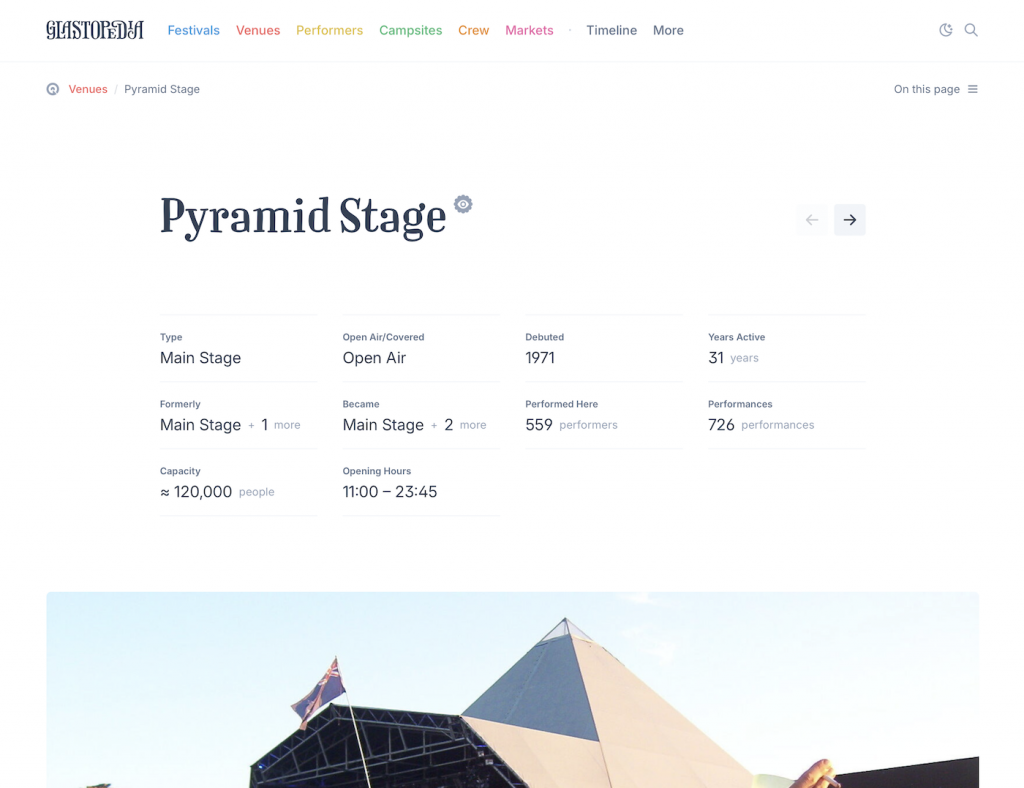
Venues and Performers
Explore the 401 venues and 5,600 performers that have graced Glastonbury over the years. From the iconic Pyramid Stage to lesser-known, intimate spots, Glastopedia provides detailed information on each venue’s capacity, genre, and unique characteristics. The performer section highlights headliners, Sunday legends, and poets in residence, along with performance statistics.
Campsites and Crew
Find the perfect place to stay with comprehensive details on the 97 campsites available, including regular spots, crew and performer areas, and luxurious glamping options. Learn about the 99 crew members who make the festival possible, from festival founders to production designers.
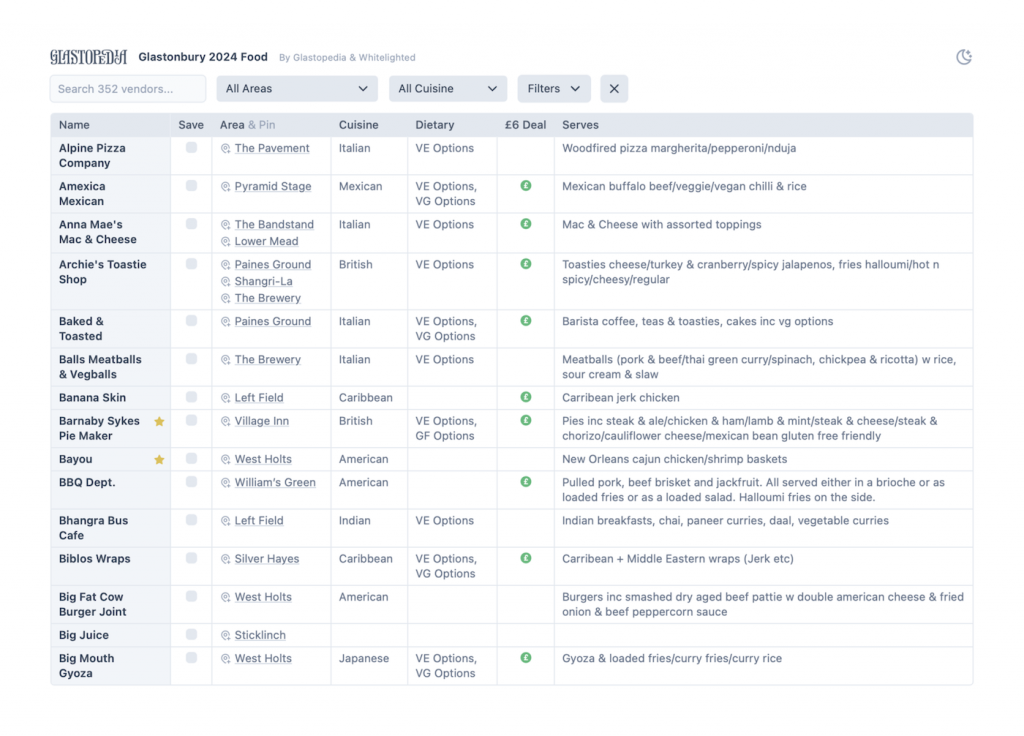
Vendors and More
Glastopedia lists over 1,300 vendors, including food and drink stalls, traders, and bars. The site also features spotlights on special aspects of the festival, quizzes for fans, and practical information on packing and causes supported by Glastonbury.
Ad-Free and Unofficial
Created by Ben Smith, Glastopedia is an ad-free, unofficial guide to the festival. It is not affiliated with or endorsed by the official Glastonbury Festivals. The site aims to be a comprehensive, user-friendly resource for festival-goers and fans alike.
Explore Glastopedia to delve into the vibrant world of Glastonbury Festival and immerse yourself in the festival community with detailed information and fun insights.
-
Sean’s Best of the Fest: Full Fuji!
- August 11, 2023 ● Experiences

Sitting outside Don’s Cafe
We’re back, and in a big way! No half-measures this year like social distancing and no alcohol sales but ramping it up like Dave Grohl of Foo Fighters said it, “Full Fuji.”
“Palace of Wonder”
Sitting majestically on top of a hill, the Spiegel Tent was a beacon for those who dug deep inside of themselves and wanted one more party. Sure there were the purists who thought the old location was better, but I’m not going to waste words discussing this. And it’s a big up for those that made it happen, balancing a 100-year old tent on uneven ground, and even pulling it out of a container after four years of moldy storage. The art was back thanks to Debs and Strapper and the crew, who are the blood and sweat of the festival.
-
Big Willie’s Burlesque is Back!
- July 7, 2023 ● Bands, From Fujirockers.org
The return of the Palace of Wonder would not be complete without Big Willie’s Burlesque: a quartet of musicians backed up by two lovely dancers, Carolina Cerisola and Alyssa Marquez. The group regularly perform in Hollywood and have been mainstays at Fuji Rock since 2004. We’re thrilled to catch up with the man they call Big Willy (Willie McNeill) and get his impressions on two decades of Fuji rocking!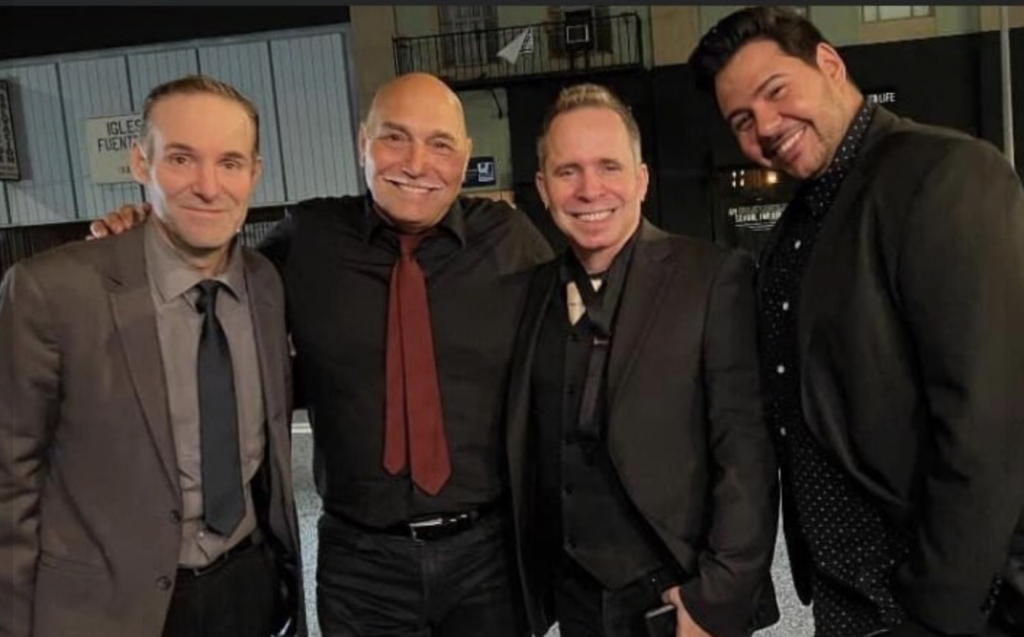
The musicians in Big Willie’s Burlesque
-
Prep for the Fuji Rock Heat!
- July 6, 2023 ● Essentials
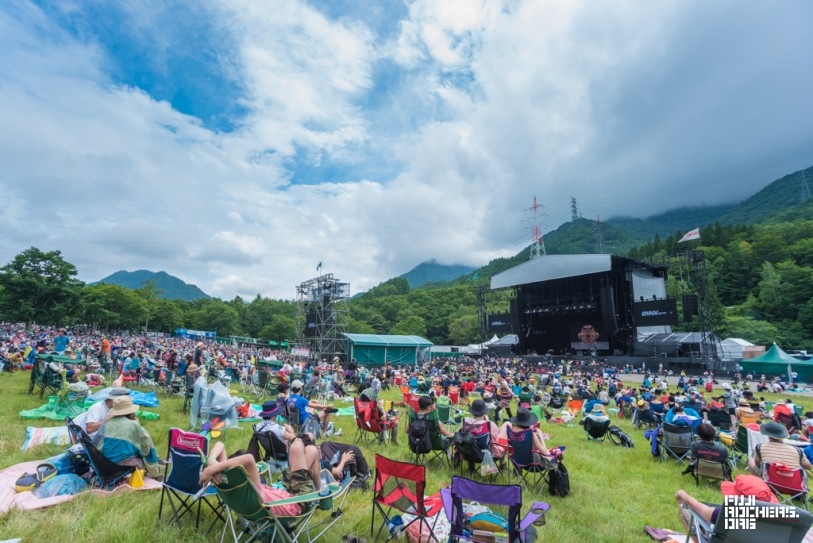
If you’ve been watching the mercury rise as we lurch sweatily into the swamp of summer, you know that being prepared can make all the difference between feeling breezy cool and damply wilted. Follow these simple tips to avoid suffering as the latter during this year’s Fuji Rock, where hot temps are just as guarantied as a spot of rain!
-
Let Rookie a Go-Go Surprise You
- June 24, 2023 ● Bands

Tomorrow’s Headlines at Rookie a Go-Go stage
This year’s lineup is nearly complete, but we still have one oft-overlooked stage to look forward to, Rookie a Go-Go! This battle of the band platform features a handful of cream of the crop aspiring artists selected form hundreds of applicants from all over the world, all competing for the winning title chosen by YOU!
-
Asa-Chang and Junray Added, Will Bring Solid Saturday Vibes
- June 16, 2023 ● Bands
It can be easy to get caught up in the main body of Fuji Rock, the Green and White Stages, the Red Marquee, etc. But don’t overlook Pyramid Garden, tucked quietly away from the big and brassy action. If you do, you could miss out on some of the festival’s most interesting acts, like newly added to the lineup but veterans of the Japanese avant-garde scene Asa-Chang and Junray.
-
Let Ginger Root Spice Up Your Fuji Rock!
- June 8, 2023 ● Bands
As anyone remotely interested in the Japanese music scene (or just the globally hip music scene in general) knows, City Pop has been having a little bit of a moment for a little bit of time. A fairly general term for 70’s and 80’s western influenced Japanese pop music, it has been a goldmine for DJs like Fuji Rock favorite Night Tempo with its odd dreaminess and hard to place nostalgia. Most people are just milking the old records though. Cameron Lew, better known as Ginger Root, however, has been going a step further and making it on his own.





